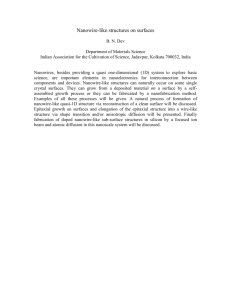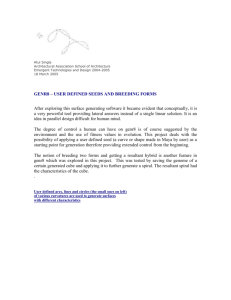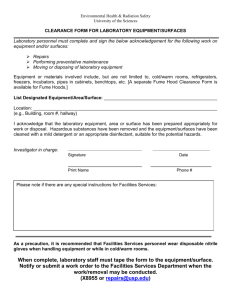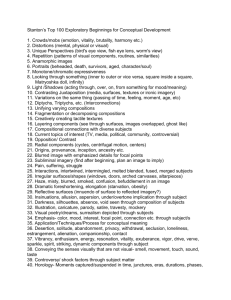MATH 4030 Differential Geometry Study Guide for Final Exam
advertisement
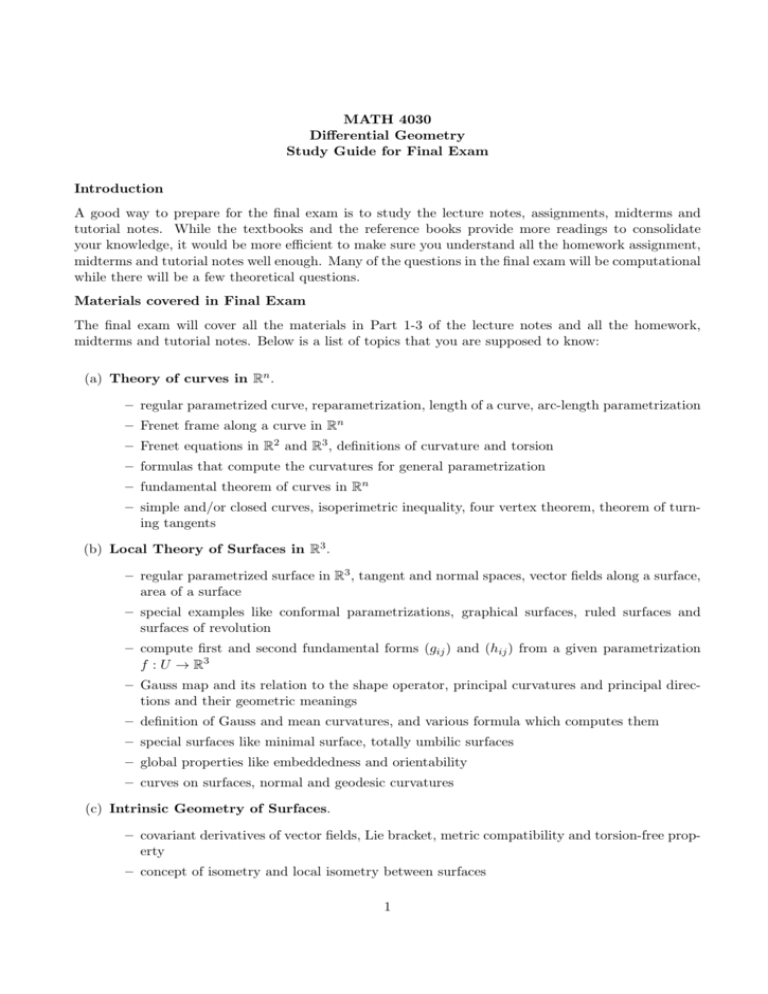
MATH 4030 Differential Geometry Study Guide for Final Exam Introduction A good way to prepare for the final exam is to study the lecture notes, assignments, midterms and tutorial notes. While the textbooks and the reference books provide more readings to consolidate your knowledge, it would be more efficient to make sure you understand all the homework assignment, midterms and tutorial notes well enough. Many of the questions in the final exam will be computational while there will be a few theoretical questions. Materials covered in Final Exam The final exam will cover all the materials in Part 1-3 of the lecture notes and all the homework, midterms and tutorial notes. Below is a list of topics that you are supposed to know: (a) Theory of curves in Rn . – regular parametrized curve, reparametrization, length of a curve, arc-length parametrization – Frenet frame along a curve in Rn – Frenet equations in R2 and R3 , definitions of curvature and torsion – formulas that compute the curvatures for general parametrization – fundamental theorem of curves in Rn – simple and/or closed curves, isoperimetric inequality, four vertex theorem, theorem of turning tangents (b) Local Theory of Surfaces in R3 . – regular parametrized surface in R3 , tangent and normal spaces, vector fields along a surface, area of a surface – special examples like conformal parametrizations, graphical surfaces, ruled surfaces and surfaces of revolution – compute first and second fundamental forms (gij ) and (hij ) from a given parametrization f : U → R3 – Gauss map and its relation to the shape operator, principal curvatures and principal directions and their geometric meanings – definition of Gauss and mean curvatures, and various formula which computes them – special surfaces like minimal surface, totally umbilic surfaces – global properties like embeddedness and orientability – curves on surfaces, normal and geodesic curvatures (c) Intrinsic Geometry of Surfaces. – covariant derivatives of vector fields, Lie bracket, metric compatibility and torsion-free property – concept of isometry and local isometry between surfaces 1 – Christoffel symbols Γkij and how to compute it from gij – definition of geodesics and parallel transport, geodesic equations, initial value problems for geodesics and parallel transport – Gauss and Weingarten equations in coordinate and covariant forms – Gauss and Codazzi equations in coordinate forms (you are not required to memorize the formula) and Bonnet’s fundamental theorem for the local theory of surfaces – Gauss Theorema Egregium, how to distinguish non-isometric surfaces – abstract Riemannian surfaces, different models of hyperbolic plane e.g. Poincare disk model or upper half plane model (d) Global Theory of Surfaces. – statements of various versions of Gauss-Bonnet theorems (proofs not required) – applications of Gauss-Bonnet theorems, effects of curvature on topology Finally... One can only learn mathematics by getting his/her hands dirty and of course differential geometry is no exception. That means you have to learn it by sitting down and doing many computations yourself. There would be times that we make mistakes in the middle of a messy calculation, or get frustrated that we keep getting the wrong answers. But eventually hard work pays off. One bit of advice is that it is better not to rush through the calculations, it is often very time-consuming (if not impossible) to go back and try to fix the mistakes made earlier in a long calculation. Good luck on your finals! 2
